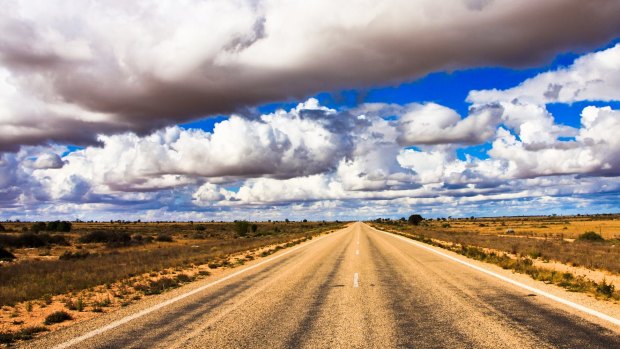This was published 9 years ago
Nullarbor, South Australia: Travel guide and things to do

Nullarbor, South Australia
The tiny settlement of Nullarbor (it is really nothing more than a roadhouse, a caravan park and all the facilities for travellers) is located 764 km west of Port Augusta and 1076 km from Adelaide.
It was the South Australian government surveyor E. A. Delisser who, in 1867 while surveying the border between South Australia and Western Australia, gave the area the name Nullarbor from the Latin words 'nullus arbor' meaning 'no trees'. Since then the term has become wonderfully imprecise and has come to refer to all the flatlands lying to the north of the Great Australian Bight. It actually defines a large area which is about 750 km from east to west and which runs between the Great Australian Bight and the edges of the Great Victoria Desert. Even the most undiscriminating of visitors will realise that the definition is not accurate. There are trees on the plain. The one area near the Eye Highway which is truly treeless is the area which lies between the Yalata and Nullarbor roadhouses. Here there is nothing other than dry stunted grasses and low lying hardy desert bushes. The effect of this strange landscape is both monotonous and mesmerising. The other major treeless area is much further to the north.
It is in the area around Nullarbor that the much-photographed 'Beware of camels, wombats and kangaroos' signs begin to appear on the Eye Highway.
Things to see
The Cliffs of the Great Australian Bight
The most valuable information for any visitors to the area is that the famed cliffs of the Great Australian Bight lie to the west of Nullarbor. Between Nullarbor and Eucla there are a total of six clearly marked lookout points. Each has its own special interest but there are only two which are truly breathtaking.
A word of warning. None of the cliff lookout points (except, maybe, for the last two) are for the faint-hearted or for those people who can't stand heights. At this point the cliffs rise sheer for about 100 metres from the sea which pounds on the rocks below. There are no safety rails and therefore the visitor is obliged to stand on the edge of the cliff and gaze up or down the coastline with nothing to protect you from falling over. To this day my stomach still drops when I recall the girl casually sitting on the edge of the cliff at Lookout #2. She had a pair of binoculars and was craning out into the void for a better view of seals on the rocks below.
From Nullarbor the lookouts go as follows:
Lookout #1
Lookout #1. It is here that the Eyre Highway Memorial (a memorial to the actual construction of the road) is located. However the view of the cliff face is difficult and unless the intrepid visitor is prepared to dangle off the edge of the cliffs there is little to see.
Lookout #2 and #3
Lookout #2 and Lookout #3 are the one which most commonly appear in coffee table books and on postcards. Both lookouts are located on cliffs which jut out so that there are truly magnificent views both to the east and the west. It is worth contemplating, as you stand 100 m above the Southern Ocean, that the Great Australian Bight is recognised as the largest indentation in the Australian coastline and that these dramatic cliffs are reputed to be the longest cliff face in the world. There is no doubt that the views from the cliffs have to be one of the truly awe inspiring natural wonders of Australia. They are a scenic highlight to match Uluru, the Blue Mountains, the MacDonnell Ranges or the Kimberley. If you're lucky (and brave enough) it is quite common to see seals on the rocks below and to hear their distinctive barking muffled by the faint sound of the waves breaking on the rocks.
Lookout #4
Lookout #4 is another disappointment. The view of the cliff face is difficult and unless the intrepid visitor is prepared to dangle off the edge of the cliffs there is little to see.
Lookout #5 and #6
Lookouts #5 and #6 offer something totally different. Here, beyond the line of the sheer cliff face, the cliffs drop to a narrow coastal plain with sand dunes and scrub. It would be quite possible, if you had half a day, to clamber down the cliff and make your way across to the coast.
Sign up for the Traveller Deals newsletter
Get exclusive travel deals delivered straight to your inbox. Sign up now.